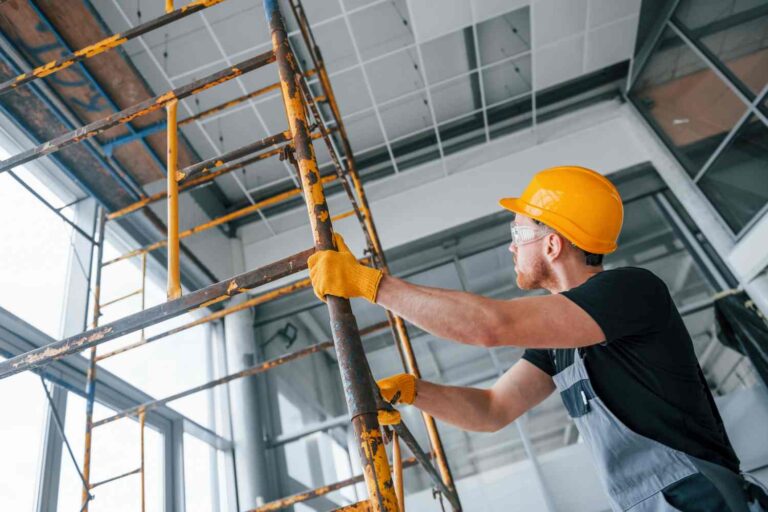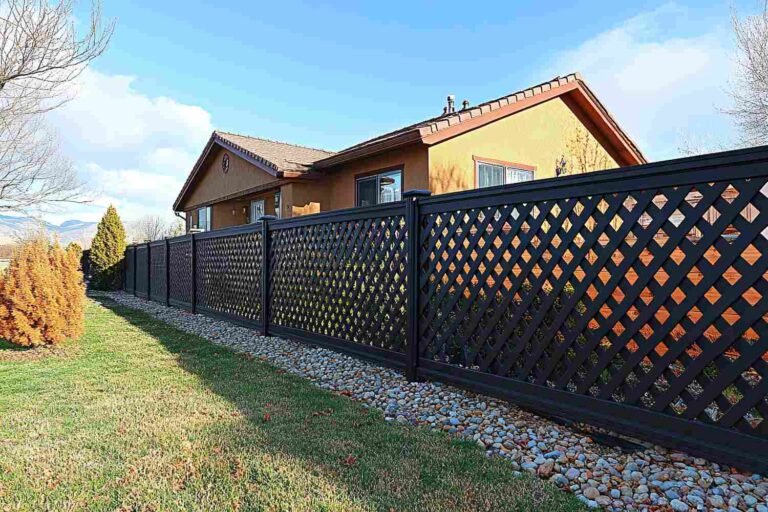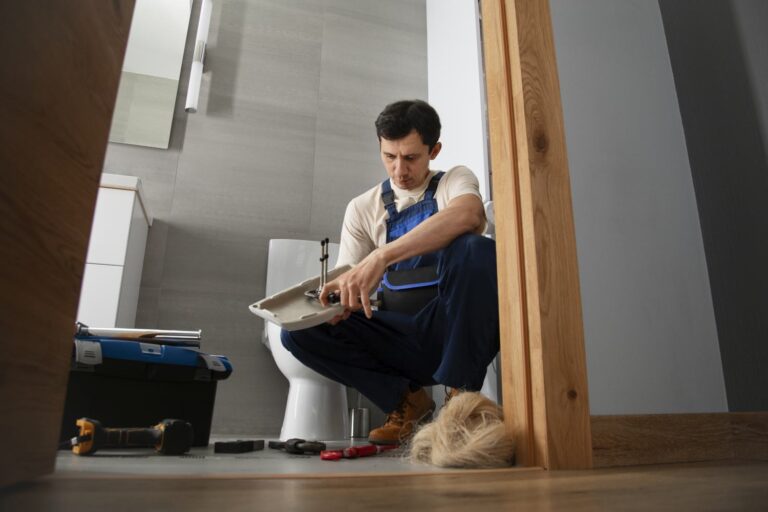- 17 September 2024
- 5 min read
Mounting your TV on the wall – all what you need to know!

Table of contents
Understanding the basics of TV wall mounts
Understanding the basics of TV wall mounts is key to a successful installation. There are three main types: fixed, tilting, and full-motion mounts, each offering different flexibility. VESA compatibility ensures your TV fits the mount, while weight and size capacity guide your choice. Proper selection ensures a secure, functional setup.
Types of TV wall mounts: fixed, tilting, and full-motion
TV wall mounts come in three main types, each serving different needs. Fixed mounts are sturdy and keep the TV flush against the wall, ideal for rooms where the viewing angle remains constant. Tilting mounts allow vertical adjustments, reducing glare and improving comfort in higher placements. Full-motion mounts offer the most flexibility, enabling you to swivel, tilt, and extend the TV, perfect for versatile viewing from multiple spots in the room.
Importance of VESA compatibility
VESA (Video Electronics Standards Association) compatibility is crucial when selecting a TV mount. It ensures the mounting holes on your TV align with the bracket. Without matching VESA patterns, the mount won’t fit properly, risking stability. Always check your TV’s VESA size to pick a compatible mount.
Choosing the right mount for your TV size and weight
Selecting the right mount for your TV’s size and weight is vital for safety and stability. Mounts are rated based on-screen size and weight capacity. Ensure your TV’s weight doesn’t exceed the mount’s limit, even if the screen size is within range. Larger TVs often require stronger mounts, especially full-motion types. Always verify the mount’s specifications match your TV’s dimensions and weight for a secure fit.
Preparing for installation
Proper preparation ensures a smooth TV installation. Start by gathering the necessary tools, such as a drill, level, and stud finder. Choose an optimal wall spot considering viewing height, light sources, and nearby power outlets. Carefully measure and mark the wall to ensure precise placement before installation begins.
Tools and materials you will need
You’ll need a drill, stud finder, level, measuring tape, screwdriver, pencil, and wall anchors. Additional materials include the TV mount kit, screws, and bolts. Ensure you have the correct drill bits for your wall type.
Finding the right spot for your TV
Choose a spot with a clear view, considering the room’s layout, seating arrangement, and avoiding glare from windows. Ensure it’s near power outlets and at a comfortable eye level for optimal viewing.
Marking the wall for the mount
Use a pencil to mark the stud locations found with a stud finder. Position the mount bracket at the desired height, then mark the screw holes using a level to ensure it’s straight before drilling.
Step-by-step guide to mounting your TV
- Attach the mounting bracket to your TV.
- Find and mark wall studs.
- Drill pilot holes at marked spots.
- Secure the mounting frame to the wall.
- Lift and attach the TV to the mounted frame.
- Check alignment and stability.
- Manage cables for a tidy finish.
Attaching the mounting bracket to your TV
Start by locating the VESA holes on the back of your TV, then align the mounting bracket with these holes. Use the screws provided in your mount kit, ensuring they are the correct length to avoid damaging the TV. Securely tighten the screws with a screwdriver, making sure the bracket is firmly attached. Some mounts include spacers for curved TVs; use them if needed. Double-check the bracket’s stability before proceeding to wall installation.
Finding and marking the studs
Use a stud finder to locate studs behind the wall. Mark their center points with a pencil for accurate drilling.
Drilling pilot holes and securing the mounting frame
Drill pilot holes at marked stud points, then secure the mounting frame with screws, using a level.
Attaching the TV to the wall mount
Lift the TV and align the bracket with the mount. Secure it with locking screws or clips provided.
Cable management and final touches
Conceal cables using covers or in-wall kits, adjust the TV’s position, and check stability.
- Hiding cables for a clean look – Use adhesive cable covers, in-wall kits, or raceways to hide cables for a neat, clutter-free look.
- Testing and adjusting your TV position – Power on the TV, check viewing angles, tilt or swivel if needed, and ensure it’s level and secure.
- Ensuring safety and stability – Double-check all screws, confirm bracket locks, and test the mount’s firmness to ensure stability.
Troubleshooting common issues
Common issues when mounting a TV include uneven mounts, difficulty finding studs, and aligning the bracket. Use a level to fix crooked mounts and recheck stud locations if screws don’t hold. For different wall types like brick or drywall, use appropriate anchors and tools for secure installation.
Dealing with uneven walls or mounts
Uneven walls can cause misalignment. Use shims behind the mount to balance gaps. If the mount is slightly off, adjust the TV bracket if possible. Re-check with a level and tighten screws gradually. For major unevenness, consider using a tilting mount, which offers more flexibility in positioning.
Fixing alignment and leveling problems
To fix alignment issues, first use a level to check the mount’s position. If the mount is slightly uneven, loosen the screws and adjust as needed. For more severe misalignment, re-drill the holes or use adjustable brackets. Fine-tune the TV’s tilt or swivel features to achieve the perfect level and angle.
Handling different wall types: drywall, brick, and concrete
Mounting TV on walls can be challenging and require hiring a professional, however here are some tips to make it work. For drywall, secure the mount to studs using wood screws. Mounting a TV on a brick wall requires masonry drill bit and anchors designed for heavy loads. Insert the anchors, then attach the mount using screws suitable for masonry. Always choose the right drill bits and anchors to ensure stability and safety.
Additional tips for optimal viewing experience
Position the TV at eye level, avoid glare from windows, and maintain the ideal viewing distance based on screen size. Use a mockup to test placement before mounting to ensure the best viewing angle.
- Ideal viewing height and angle – Position the TV’s center at eye level, usually 42-48 inches, with a slight downward tilt.
- Avoiding glare and reflections – Place the TV away from windows and use tilting mounts to minimize glare and reflections.
- Using a mockup to visualize placement – Use cardboard cutouts or painter’s tape to simulate the TV size and placement before mounting.
You might be interested in...
- Building advice

17 September 2024
Fundamentals of scaffolding
Scaffolding is a crucial temporary structure in construction, used to support workers and materials at elevated heights. There are several types of scaffolding: supported scaffolding, suspended scaffolding, and mobile scaffolding. Regulations mandate that scaffolds support their weight plus four times the maximum intended load. Workers need specific training on the scaffolding they use, including safe operation, hazard recognition, and understanding of load capacities.
- Building advice

17 September 2024
Optimal fencing options for gardens in windy areas
When considering garden fencing options for windy areas, opt for durable materials like vinyl or treated metal, which resist wind damage and require little maintenance. Designs with gaps, such as lattice or horizontal slats, allow wind to pass through, reducing pressure and damage. Ensure the fence posts are securely anchored deep with concrete for stability. Adding vegetation like tall shrubs and trees near the fence can also act as natural windbreaks, enhancing protection and aesthetics as one of the maintenance tips for windy gardens.
- DIY
- Plumbing advice

17 September 2024
The toilet is not flushing properly – what to do?
When your toilet isn’t flushing properly, it can be both inconvenient and concerning. Before panicking, it’s important to assess the situation calmly. The first step is to check whether the problem lies with a partial flush, a weak flush, or no flush at all. Often, these issues stem from simple causes like a clogged drain, low water levels in the tank, or a problem with the flapper. Start by examining these components. If you notice that the flush handle is loose or unresponsive, the issue could be with the chain or flapper inside the tank. While some problems are easy DIY fixes, knowing when to seek help is crucial. If quick fixes don’t work, understanding the right course of action will save time, prevent further damage, and help restore your toilet’s functionality. For professional assistance, consider hiring a service through ConnectClick to get expert help right when you need it.